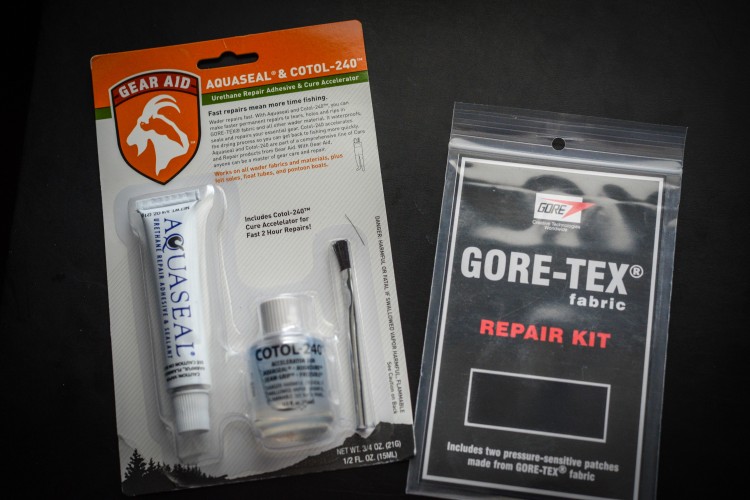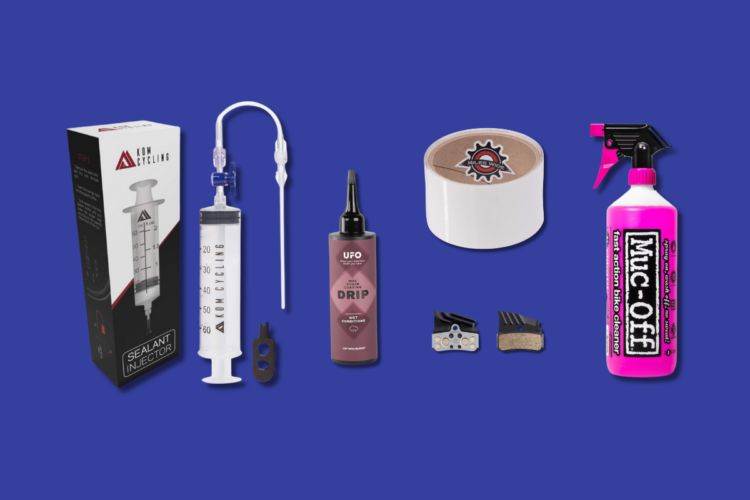
Hi folks – in this article I am going to tell you how to install, set up, and adjust both 3×10 and 2×10 front derailleurs (though most of this will work for 9spd drivetrains as well). I will also cover the different types of front derailleurs including top clamp, bottom clamp, high direct mount, low direct mount and E-type.
The first step is to identify what type of front derailleur you have. You’re going to have to look at how the cable pulls, size the clamp diameter (or ID the type of direct mount), determine the cage length (short or long), and of course count the number of shifts (2 or 3). The photos below show the different types of front derailleurs.


Top clamp (left) & bottom clamp (right)


High direct mount (left) & low direct mount (right)

E-type
Establish the right front derailleur you need, make sure you have the correct fitting (is it E,E2,S1,S3), and if you’re upgrading to 3×10 or 2×10, make sure you have compatible gear (crank, front shifter).
The next step is to gather all the tools necessary along with the instructions from your manufacturer.
4mm, 5mm, 6mm Hex Keys
8mm, 10mm Hex Keys
Friction grease
Side cutter
Pliers
Cable housing cutter
Ruler / Vernier caliper
Bottom bracket tools (GXP, Octa link, 14mm,15mm extractors)
Torque wrench
Now it’s time to install the front derailleur. With a low direct mount model you’ll need to remove the crank to access the mounting points. E-type front derailleurs require you to remove the drive side crank bearing and replace one of the spacers with the mount plate. Bolt the E-type derailleur down with the single alignment bolt first, then torque the bearing cup back in place.
In setting the derailleur you have to keep three things in mind:
- The spacing between the top of the large chain ring teeth and the lower edge of the derailleur cage should be 1-3mm (regardless of design).
- Use friction grease to reduce the necessary torque on the clamp.
- Tighten the clamp and make sure the cage is parallel with the chain ring.


Setting the gap with a 2×10 derailleur is pretty easy. Just align the set height and torque, keeping in mind that everything should stay parallel. The 3×10 set ups require you to either use a “pro alignment block” that comes with new Shimano front derailleurs or you can carefully move the cage to the middle ring position and check the gap, adjusting up or down as necessary. Torque the clamp down based on your manufacturer’s recommendation (usually 5 – 7Nm).


Now you can set the low (L) and high (H) settings. With the chain already installed you want to have a 0.5mm gap between the inner chain guide plate and the chain. If you don’t have a chain on, from the side of the small chainring to the inner chain guide plate you want a gap of 1.5mm (I usually prefer to do this with the chain installed). Turning the (L) screw counter-clockwise increases the gap while turning the screw clockwise decreases the gap. With the high gear we want the same spacing of 0.5mm between the chain and the inside of the outer plate. Use the (H) screw this time – a clockwise turn will decrease the gap.


With the derailleur physically set up, now you can continue with the rest of the installation.
Starting from the top, make sure the shifter is placed into low gear. For SRAM models, open up your shifter pod by loosening the single screw on the pod. For Shimano shifters there is a plastic cover which you remove (near the thumb shifter). In either case, simply install a new cable and give it a slight tug to make sure it is snug (saves time when tuning).


Above is a typical Shimano shifter. Below is the new X9 / X7.


Below is the XO with its cover removed. As you can see it’s pretty simple. One cover bolt.

Check out your cable housings and remove the housing caps to get a better look. If the ends look frayed it may be time to replace the cable housing as well. If you do decide to change the housing, use the existing pieces to match the lengths. Cutting shifter cable housing requires a proper cutter (not a side cutter as it squishes the housing and increases drag on the cable); try the Park CN-10 cutter. Using a proper cutter also ensures a nice clean, straight cut essential for proper shifting. Once the housing is all cut and installed with cable ends, feed the shifting cable through and down to your derailleur. Do not attach the cable at this point.
Once all the cables are routed and cable ends are on and double-checked for snugness, feed the cable to the front derailleur. Before attaching the cable to the derailleur, turn the cable tension adjuster all the way in (clockwise) and back it out 2 full turns (this is a perfect starting point). It is important to follow the routing correctly. If you purchased the derailleur new your instruction sheets should have clear diagrams showing the correct route. It is very, very, very important to get this right – I’ve seen too many installations where someone got the cable installed incorrectly and the index shifting just doesn’t work. What happens is that the incorrect amount of cable will be pulled. Below is an example of correct installations (Courtesy of SRAM):

Once you’ve figured out the correct route, tighten the cable with the pinch bolt. About 5-7Nm should ensure the cable doesn’t slip. The trick here is that there should be some slack in the cable.
Finally you’re ready to check out shifting performance. With 2X10 it is pretty easy to set up. If you have a stand to allow you to turn the cranks that’s great; if not, find a friend willing to hold the bike up for you for a few minutes. Crank the bike and shift up to the big ring. The shift should bring the chain up to the large ring almost instantly without grinding on the way up. If it takes too many crank strokes or just skips then you have to turn the adjuster knob on the shifter out (counter-clockwise) half a turn at a time until it shifts. Once it shifts up nicely, just make sure that when you’re in the smallest gears on the cassette the chain doesn’t rub on the inside of the outer cage.
With a 3×10 system we only care about centering the middle ring. The first and third rings are taken care of with the stops on the derailleur but the middle ring is aligned with cable tension and the index in the shifter. Again, shift from the small ring to the middle ring and see how it shifts – did it get to the middle ring in about one crank turn or did it skip? If it skipped and didn’t shift, add a bit more tension half a turn at a time (counter-clockwise). Now if it shifts too much, back it off a quarter turn (turn clockwise). You’re trying to get the cage positioned so that the middle gears shift perfectly without rubbing on the cage. On all bikes there will be a bit of rub on the extreme ends of your gear range. Below is a chart borrowed from Shimano that works great as a diagnostic chart.

After about a week or two of riding, especially with new cables, go back and recheck the spacing and torque on all the bolts. I hope this helps and if you have any questions, feel free to post a comment or a thread in our forums. Cheers folks!
[see_also id=”6301″][/see_also]




















8 Comments
Aug 16, 2011
I always have a tough time routing cables through my SRAM shifters - getting the cable around the bend is nearly impossible without fraying the thing on its way out. Any tips there?
Aug 18, 2011
Aug 16, 2011
Aug 20, 2011
Aug 18, 2011
Aug 18, 2011
Jan 6, 2012
Aug 18, 2011